3rd India China Summit: India leads after three rounds
From November 17 to 24, India is be taking on China in an 8 round match under the Scheveningen system at the International Chess Hall of the KIIT University in Bhubaneshwar India. The event features young grandmasters from both countries. After the first three rounds, the Indian team has come out on top with a win in the second round while rounds one and three ended as spiritedly fought draws. There were plenty of interesting games and we bring you a report on all the action from the 3rd India China Chess Summit.
3rd India China Chess Summit kicks off in Bhubaneshwar
The third edition of the India China Summit kicked off at the International Chess hall of the KIIT University in Bhubaneshwar, India on the 17th of November 2018. The event is an eight round team match featuring four young players from each of the participating federations.

The prize purse for the match is ₹10,00,000 with the winner’s share being 60 per cent. The match uses the Scheveningen system wherein each player plays all of the players of the opposing team twice. The time control for the games is 90 minutes for the first 40 moves followed by 30 minutes for the rest of the game with an increment of 30 seconds per move starting from move one.
So far, three rounds have been played and India has taken a slim half-point lead after their second round victory.
Round 1
Some very exciting games were seen in the inaugural round itself and Indian players were seen dominating in almost all of the encounters.
GM Srinath Narayanan scored the quickest win of the day with the white pieces. Xu Xiangyu, Narayanan’s opponent, had chosen the Petroff Defence to counter Narayanan’s 1.e4. Although the opening seemed rather insipid, Srinath got a space advantage out of the opening and got his opponent’s knights in a strong bind by catching both of them in relative pins.

As can be seen, both of the black knights have been paralyzed by the white bishops. Play continued with 17…Bxc4 18.Rfe1 Qf8 19.Rxe8 Qxe8 20.Bc6.
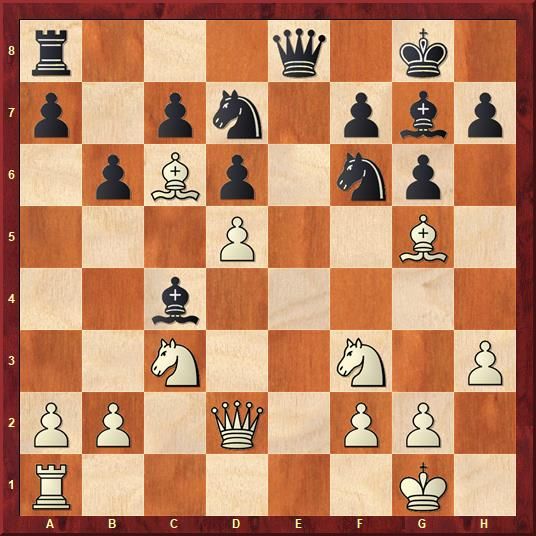
Black’s position is already precarious by this point but after black’s next move, he was simply doomed. Xu saved the exchange with 20…Rb8 here but after 21.Qf4, he was hard-pressed to decide whether to lose a piece on c4 or f6. Srinath wrapped things up in the next 10 moves.
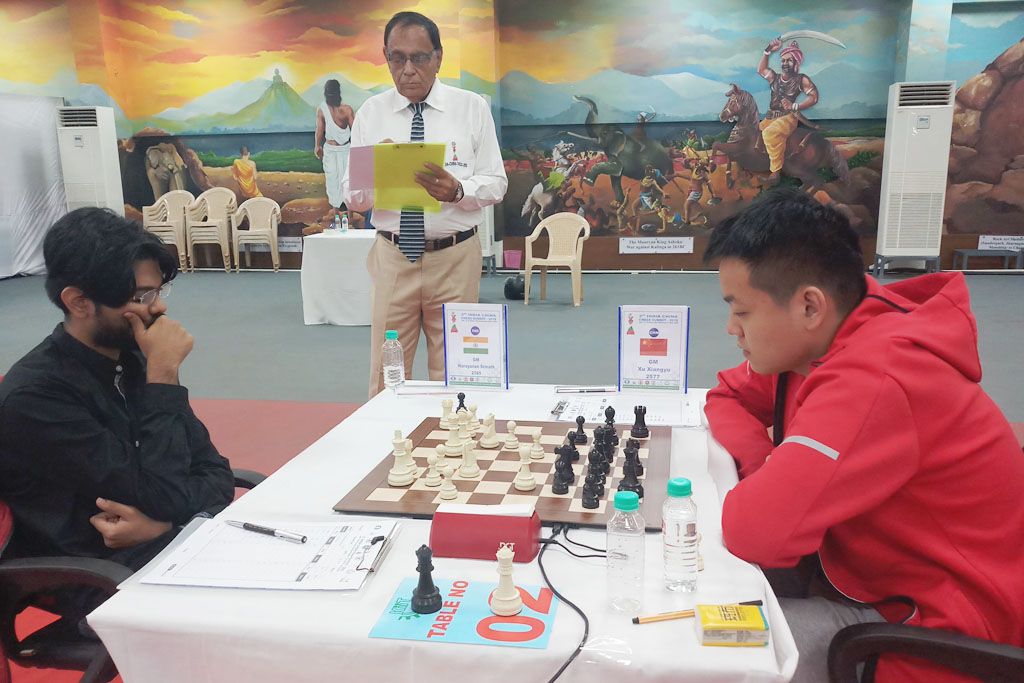
India’s top rated in the match, GM Murali Karthikeyan did not have the best outing in the opening round. Although his game had begun well, Karthikeyan lost the thread of the position and ended up losing against Lu Shanglei.
In a classical Sicilian, several exchanges had led players to the above position where black had two minor pieces against white’s rook and two pawns. White doubled on the d-file over the next few moves and exchanged a pair of rooks.
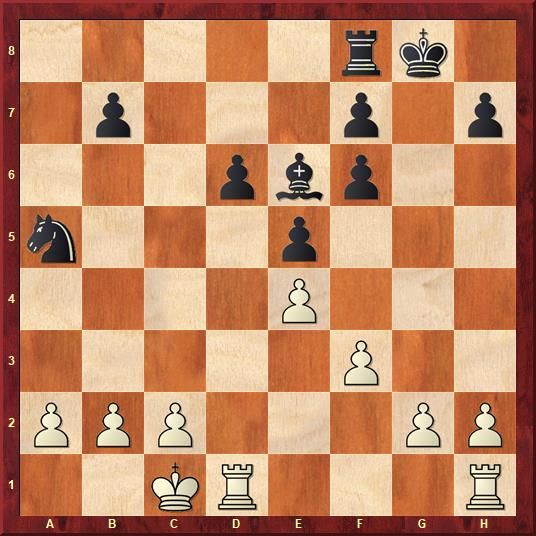
White continued with 19.Rxd6 here. And after 19...Nc4 20.Rd3 Ra8 21.Kb1 f5 22.Rhd1 f4, white exchanged rooks with 23.Rd8+.
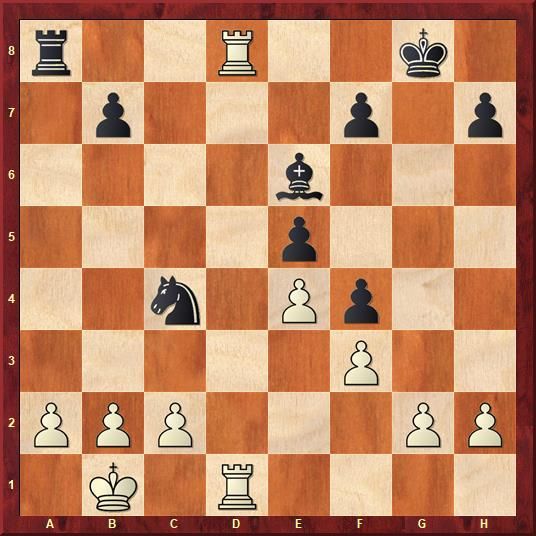
By this point, white's queenside pawn majority looked innocuous but, eventually, white’s ‘a’ pawn began to roll down the board. Karthikeyan had to give up one of his minor pieces to check its progress. Once black had the material edge, it wasn’t too difficult for him to mop up.

On board 4, Aryan Chopra tried extremely hard to pull out a win but had to settle for a draw in the end. In a Sicilian Scheveningen, Aryan launched a dangerous attack on the black king by storming his kingside pawns. Xu Yinglun, Aryan’s opponent, managed to remain in the game by exchanging queens but had to give up a pawn to accomplish that. Aryan tried hard to make something of his extra pawn but once the rooks were exchanged on the 52nd move, black found sufficient counterplay to hold on to a draw.

Amid all of this, Aravindh Chithambaram’s game against Bai Jinshi was rather insipid. The two discussed a Nimzo-Indian Defence which fizzled after a mass exchange of pieces in the middle game. By move 32, players had repeated the position thrice to sign the truce.
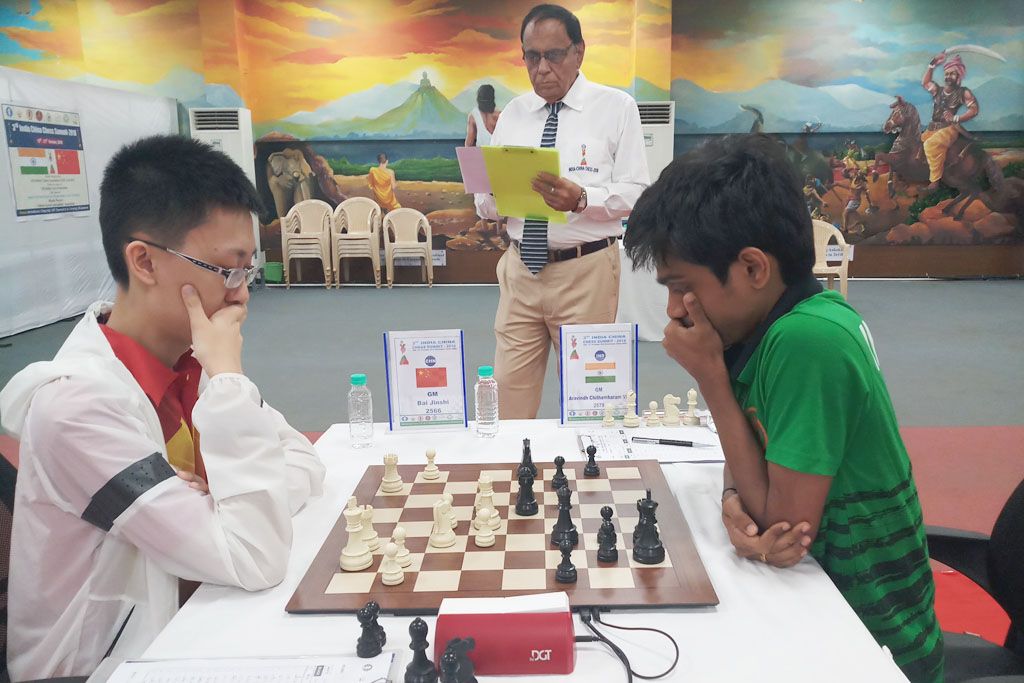
Round 2
The second round was the one that brought India its first win. After a dismal start, GM Murali Karthikeyan took his revenge by beating Lu Shanglei in their very next encounter. Once again, a Sicilian Defence was on the board but this time, it was Karthikeyan who had the white pieces. Although the game had begun with the Najdorf variation, Lu Shanglei adopted a Dragon like setup eventually. Quite thematically, Karthikeyan flung his ‘h’ pawn forward and tried to generate chances on the kingside but several exchanges eventually led the game into an equal rook and pawn endgame.
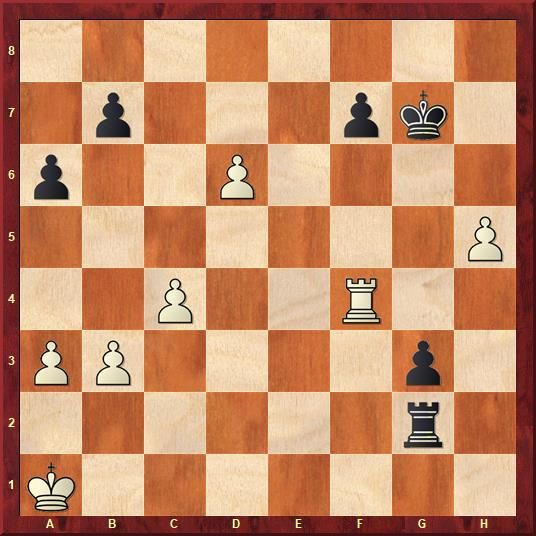
We have a pawn race here. White has just pushed his pawn up to d6. Under pressure, Lu Shanglei laid an egg at this point by responding with 43…Rg1+. What was equal just half a move ago is now lost for the Chinese Grandmaster. The game continued with 44.Kb2 Kh6 45.Rf6+ Kxh5 and 46.d7.
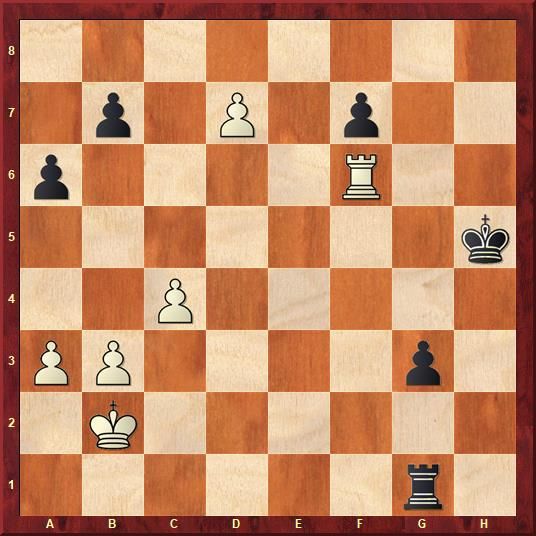
Black got his rook behind the pawn immediately with 46…Rd1 but it was already too late. White simply gave a check with 47.Rf5+ and body blocked the black rook with 48.Rd5.

All of the other games of the round were drawn, leaving India victorious with a score of 2½-1½.
Round 3
The third round, like the first one, saw two decisive games – one in favour of China and the other in favour of India. For India, the full point was scored by the Chennai based teenager, GM Aravindh Chithambaram.
Aravindh had essayed the Berlin Defence with the black pieces and had maintained a balanced position throughout against Xu Xiangyu. On his 36th turn, Xu gave up a pawn, perhaps, with the hope of creating some play.
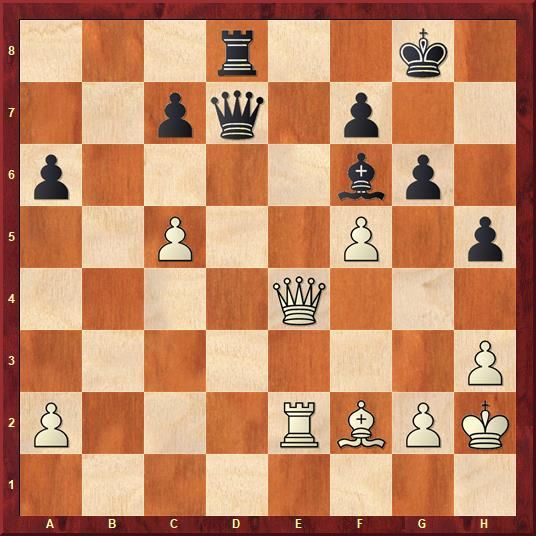
Aravindh’s extra pawn was also not in the best shape and this looked fine at the outset. But as play progressed, the game began to tip in Aravindh’s favour. By the 54th move, Aravindh managed to exchange bishops and win another pawn. After this, Aravindh’s edge had become a lot more serious. Xu fought hard in the ensuing rook endgame but was unable to save the position.
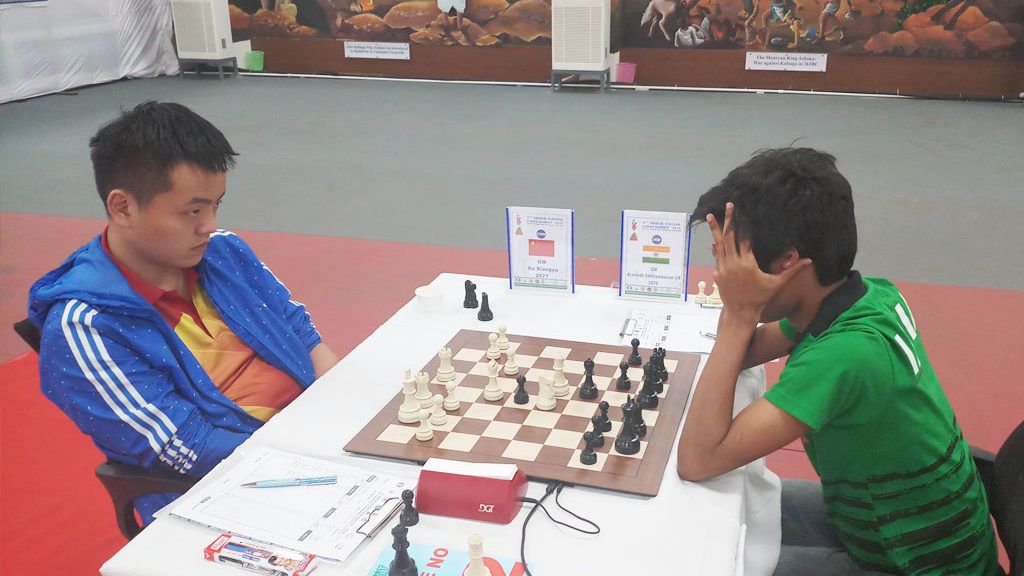
For China, the win was scored by their lowest rated player, GM Xu Yinglun over India’s top seed, GM Murali Karthikeyan. In a King’s Indian Defence, Karthikeyan had launched the thematic attack on the white king when the Chinese Grandmaster came up with an ingenious exchange sacrifice.
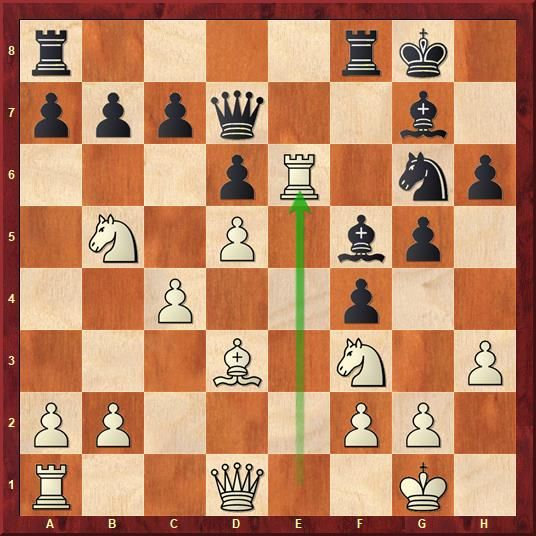
The computer thinks it is best not to touch the rook and defend the g6 knight with 18…Ne7. But Karthikeyan decided to refute the sacrifice by accepting it. The game continued 18…Bxe6 19.fxe6 Qxe6 20.Nxc7 Qd7 21.Nxa8 Ne5.
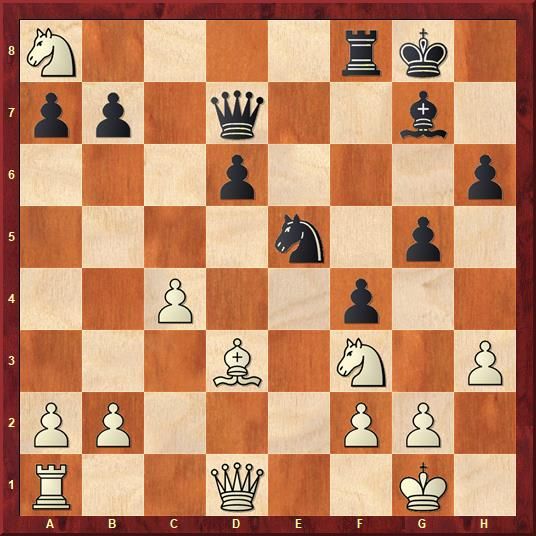
Here, white simply exchanged on e5 and had an overwhelming position after planting his queen on h5. Soon a couple of black’s pawns were plucked off and despite the existence of opposite coloured bishops, white had little trouble converting the endgame.
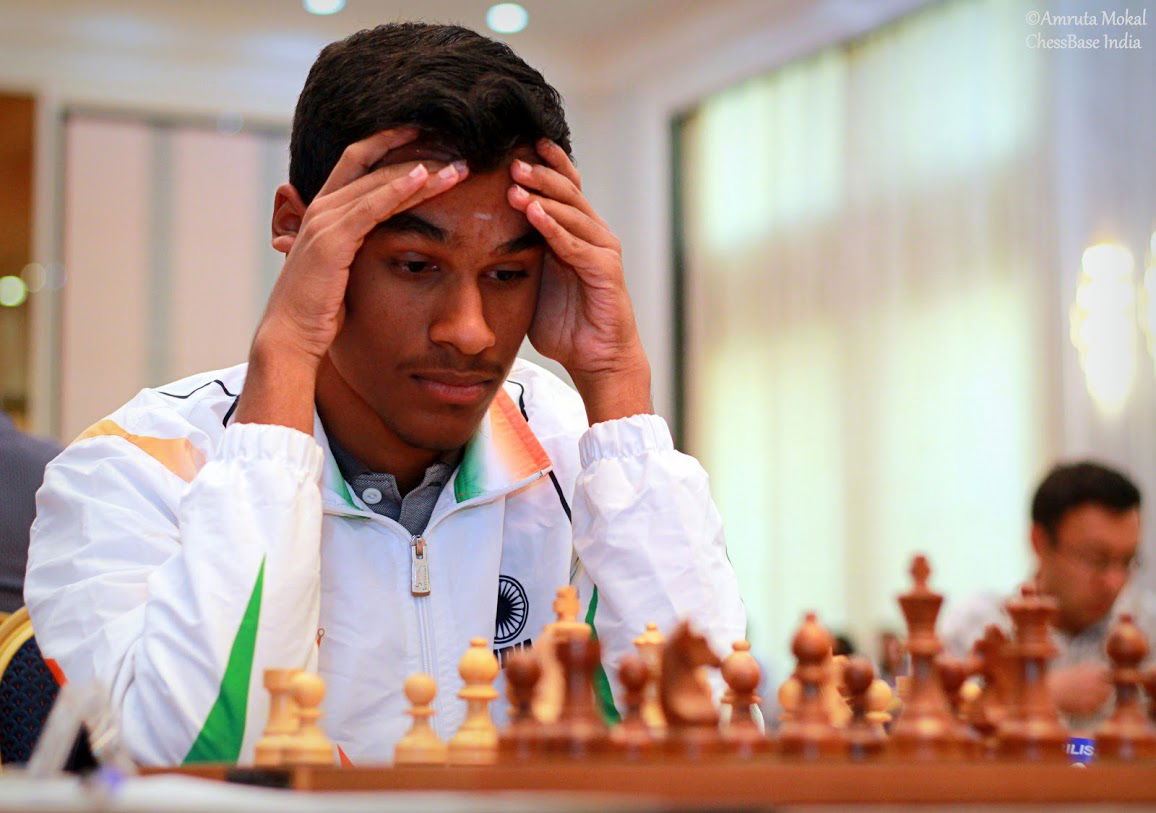
Score after 3 rounds
| Rk. | Team | 1a | 1b | 2a | 2b | TB1 | TB2 |
| 1 | India | * | * | 2 / 2 | 2,5 | 4 | 6,5 |
| 2 | China | 2 / 2 | 1,5 | * | * | 2 | 5,5 |
*Tie Break1: Matchpoints (2 for wins, 1 for Draws, 0 for Losses)
**Tie Break2: points (game-points)
Links



